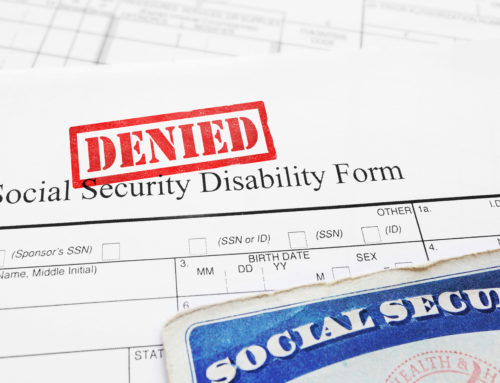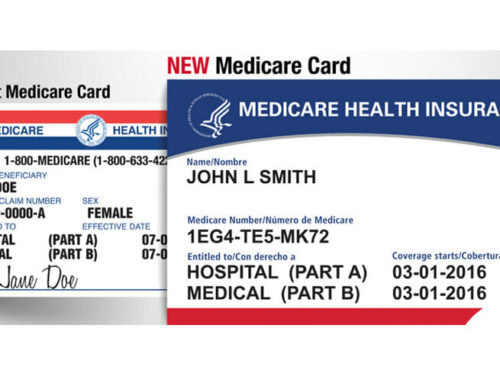Do Not Go At It Alone

This report also studied decisions made by Administrative Law Judges and concluded that judges who joined the Social Security Administration between 2007 and 2015 awarded benefits at a higher rate than newer judges. It also reveals that video hearings resulted in an award rate of about 2.8% less than in person hearings. While one cannot ever guarantee that benefits will be awarded because of the very broad difference between injuries, ailments and conditions, generally speaking, the chances of being awarded benefits is better for individuals 55 years of age and older.
Disability Approval Rates Dropping
Social Security Administration also released information in February concerning approval and denial rates. In fiscal year 2017, nationwide, the Administrative Law Judges awarded benefits about 47% of the time. This was much lower than award rates in years past.
Delay Time Increases
As the years have gone by, we have noticed that the wait time, from the point when a Request for Hearing before a Social Security Administrative Law Judge is filed until the hearing is actually held has increased dramatically. Currently, we advise clients that it takes approximately twenty-two (22) months until a hearing is held. Sometimes it is a little shorter and sometimes a little longer. This appears to be a direct consequence of inadequate governmental funding for Social Security Administration’s basic operational needs. Unless the Social Security Administration hires more administrative law judges, attorneys and clerks, the length of the delay will likely not get better. These delays, when added to a person’s inability to work, place an extreme financial burden on workers and their families.
Recent Study on Work to Get Welfare Benefits
A recent article authored by Jared Bernstein, a former Chief Economist to Vice-President Joseph Biden, and currently a Senior fellow at the Center on Budget and Policy Priorities has addressed the Trump Administration’s pursuit to add work requirements to Food Assistance, Housing subsidies and Medicaid. He concludes that requiring work of those who use low income programs may initially encourage those who would have worked anyway to do so more quickly, if they do not face significant employment barriers and live in areas where jobs are available. The long term affect will be limited because of the stressors of poverty, the volatility of the low wage labor market, the lack of decent and affordable child care, discrimination. He cites various statistics from states across the country to support his conclusion. For example in Kansas, it was shown that individuals relying on the temporary assistance for needy families were already working and worked as much before getting off benefits as they did after getting off benefits. He concluded that the notion that working age, able bodied poor people with public assistance do not work is wrong. He advocated for more and better job training, work support, wage subsidies and job creation programs.
Work and Collect Disability at Same Time
We represent many individuals who receive Social Security Disability benefits and earning from work. As long as the monthly gross monthly earning for 2018 is less than $1180, those individuals can lawfully collect both. If they had to rely solely on their social security disability benefit, those individuals suffer extreme financial hardship. They would like to work full time for more money but cannot because of their disability.
Workers Compensation
Supreme Court Rules in Favor of Worker
In what has been hailed as the biggest court victory in years for disabled workers receiving workers compensation benefits, the Pennsylvania Supreme Court determined that certain provisions of the Pennsylvania Workers Compensation Act were unconstitutional. The case is entitled Protz v. Workers Compensation Appeal Board. The injured worker, Ms. Protz, suffered severe injuries in a work accident years ago and received workers compensation wage loss benefits because she could not work. The insurance company sought to use a provision contained in the former part of the law, now ruled to be unconstitutional, that was designed to limit the time period over which she could receive benefits. It began with the insurance company sending her to a doctor for an Impairment Rating Exam (IRE). This involved an examination of a worker not for the purpose of deciding if the worker does or does not have conditions that restrict, limit or prevent him or her from working. Instead, the examination was designed to have the examiner reach a conclusion as to the extent a workers whole body was impaired, in percentage terms, from head to toe because of the work injury. So, if a worker presents with a low back injury, an IRE doctor does not address whether it limits work. Rather, the doctor will reach a conclusion that the person has a whole body impairment rating of, for example, 10%. The doctors who perform these types of exam were paid as much as $2100, which included writing a report.
I.R.E. Requirements
There were several requirements associated with conducting an IRE. First it could be done only after a worker received 104 weeks (i.e. two years) of total disability benefits. Those are benefits paid when a worker is completely unable to perform his or her own job. Second, the exam had to be conducted within 60 days of the two year anniversary payment date, to be retroactive to that date. Third, the examining doctor had to utilize a book, known as the American Medical Association Guides to Permanent Impairment to compare his findings to and rely upon percentage figures set forth in the Guide. Fourth, when the law was first put in place, the American Medical Association Guides were in the Fourth Edition. It was known that going forward new editions would be printed. So the law instructed the examiner to use the most current version of the Guides. At the time of the Protz exam, the examiner used the Sixth Edition. Fifth, if the percentage of the workers impairment was found to be 50% or greater, he or she would continue to collect total disability benefits with no set limitation of time. The worker died of unrelated causes, or was determined to be fully recovered thereafter of course benefits would stop. IF on the other hand, a worker’s impairment was determined to be less than 50%, the insurance company would be obligated to pay benefits for total disability going forward, no more than 500 weeks. This equates to about 9 and ½ years. In essence, the IRE process utilized an artificial way of limiting the time period over which a worker could be paid. Before the IRE process was put into law, there were no such artificial ways to limit the time period over which one would be paid.
Unfairness of I.R.E.
Several things about the IRE were very unfair to injured workers. First, the AMA Guides themselves stated that they could not be used for the purpose the Pennsylvania Legislature allowed them to be used for. Second, Guides are used by some states whose workers compensation system bases payments on a completely different theory from Pennsylvania. Third, to reach an impairment rating of 50% or more was very rare. In our practice we had one case, out of hundreds, where a worker was over 50% impaired. Paraplegics from the waist down rate a small percentage above 50%. Fourth, the examiners who performed the exams made a killing. Fifth, to have his or her own exam conducted was cost prohibitive. Sixth, the process, like most of the amendments made to the workers compensation law since the early 1990s favored employers, businesses and insurance companies. Workers were forgotten by one particular political party that forced the amendments through.
The Supreme Court ultimately ruled that the law was faulty when it allowed for the latest version of the Guides to be used. This was a very legally technical way of invalidating the law but it served the purpose of knocking it off the books. Finally justice was done for all injured workers throughout Beaver County and across the state.
The victory may be short lived though. The party that controls the Pennsylvania House of Representatives and Pennsylvania Senate are fast at work to rewrite the law and once again include Impairment Rating provisions in the law. Because the Workers Compensation Law applies to workers in all walks of life, and one never knows if they will be next to collect, we urge our clients to contact their elected state officials to pass laws that protect workers, not insurance companies.
Proposed Law Limiting Medical Treatment for Injured Workers
A proposed law seeking to limit medical treatment for injured workers was narrowly defeated in early February when enough votes were not cast to have it pass. If passed, the law would have imposed a drug formulary on the Pennsylvania Workers Compensation System. A drug formulary would require use of medication prescribed by injured worker’s doctors to a list of medication managed by insurance companies. Many drugs which are needed by a worker may not be recommended by the formulary and thus be unavailable to workers. This law, if passed, will make it harder for doctors to treat patients and add to the already deep financial pockets of the insurance companies. Injured workers need to contact politicians in Harrisburg who run the House of Representatives and Senate to vote against any further proposed legislation of this sort. It is time we start protecting injured workers – not injuring them more.


























